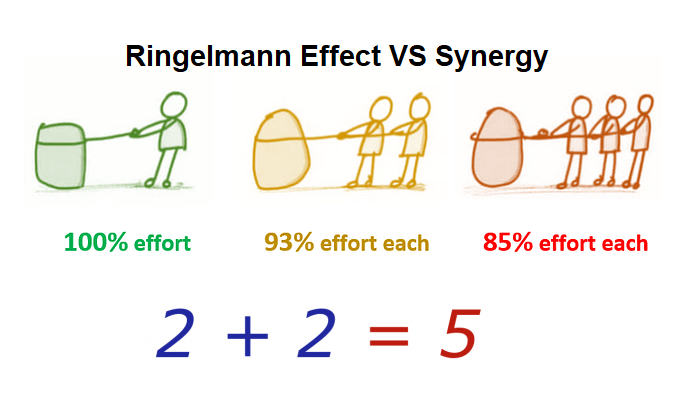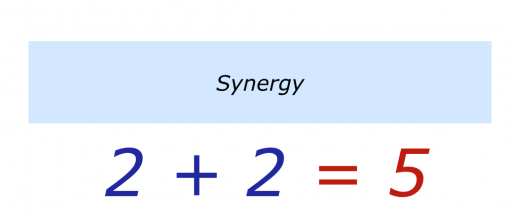The Ringelmann effect VS Synergy
The Ringelmann effect
Dr. Abdulrahman ALJAMOUS
In 1913, a guy named Max Ringelmann noticed something strange about humans. Ringelmann, a French agricultural engineer, took a rope and asked individual people to pull on it.Then he asked those same people to pull on the rope with a group. He observed that when people pulled with a group, they put in less effort than when pulling on their own.

We call it “the Ringelmann effect,” or social loafing. It describes the tendency for individual productivity to decrease as group size increases. And it doesn’t just happen in tug-of-war games: It’s present in companies like Google and Facebook more than a century after Ringelmann’s discovery. And chances are, it’s happening in your workplace, too.
Ringelmann's classic finding—that the addition of co-workers in a rope-pulling task leads to a linear decrement in the individual group member's average performance—was reexamined experimentally. Study I attempted to replicate the effect, using groups of subjects ranging in size from 1 to 6. Performance dropped significantly as group size was increased from one individual to two or to three, but the addition of a fourth, fifth, or sixth member produced insignificant additional decrements; thus, the effect was not linear but curvilinear. Study II was designed to examine possible sources of performance loss, separating the factors of “coordination” and “motivation” loss (Steiner, 1972). The possibility of intermember incoordination was eliminated, while motivation loss remained free to vary: Each experimental subject pulled alone, and in “groups” where he believed there were from one to five other members. Once again, individual performance declined significantly with the addition of the first and second perceived co-worker, but then leveled off for perceived group sizes three to six. Some implications are discussed. 
Synergy
Synergy is when people combine their energies to create something greater than they could achieve separately by themselves. There are obviously two kinds of synergy.

Synergy is the energy or force created by the working together of various parts or processes. Synergy in business is the benefit derived from combining two or more elements (or businesses) so that the performance of the combination is higher than that of the sum of the individual elements (or businesses).
In the case of water, for example, it is said that `wetness' is an `emergent property', which is not found in either hydrogen or oxygen, but which only emerges when the two are brought together in the water molecule of h2o. Where the use of this example, like the doctrine it supports, goes awry - at least in my view - is in tacitly assuming that the parts have nothing to do with the synergistic results or emergent properties. I would suggest, contrariwise, that the parts or constituent entities have -everything- to do with the results of a synergy.
